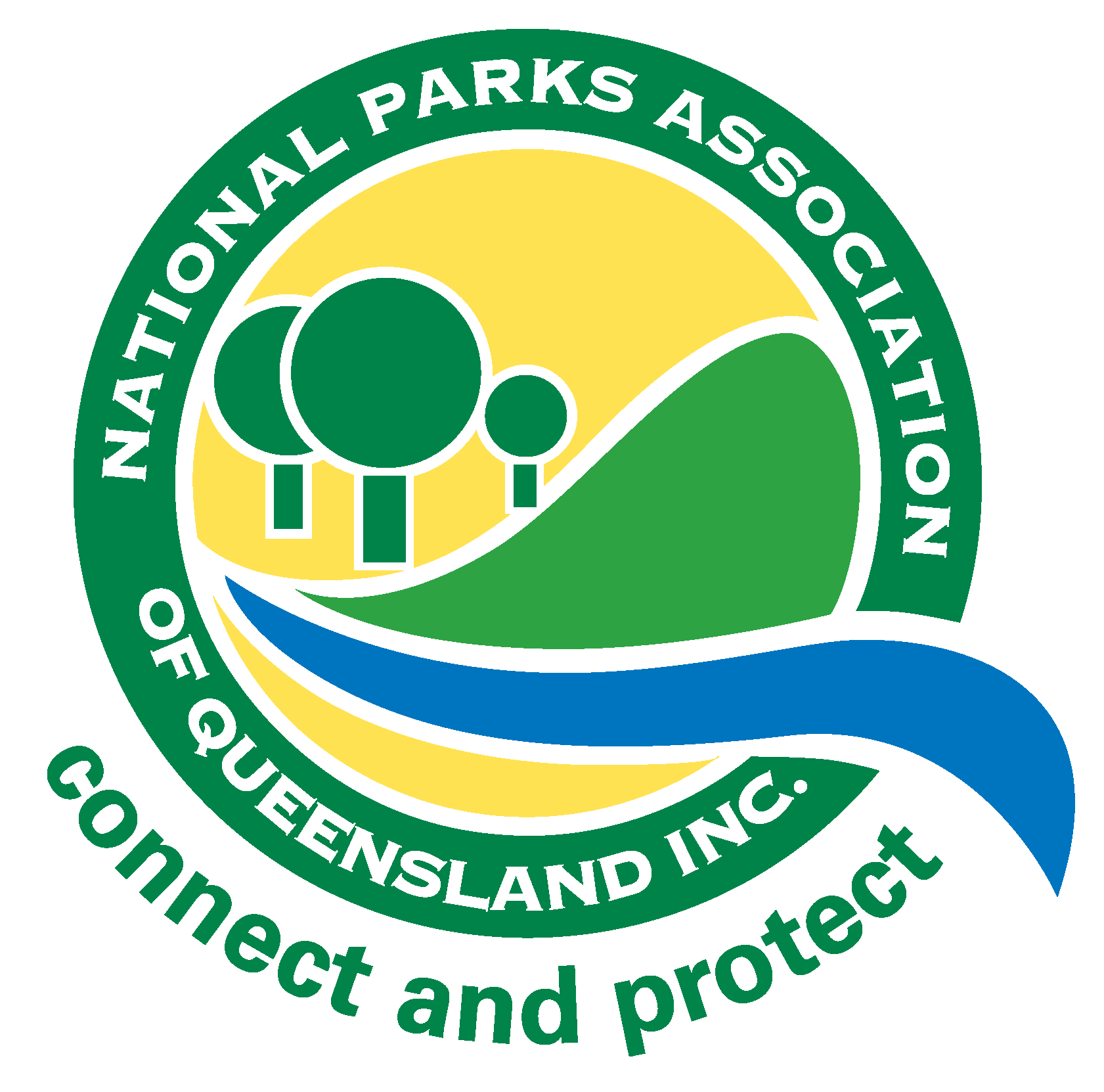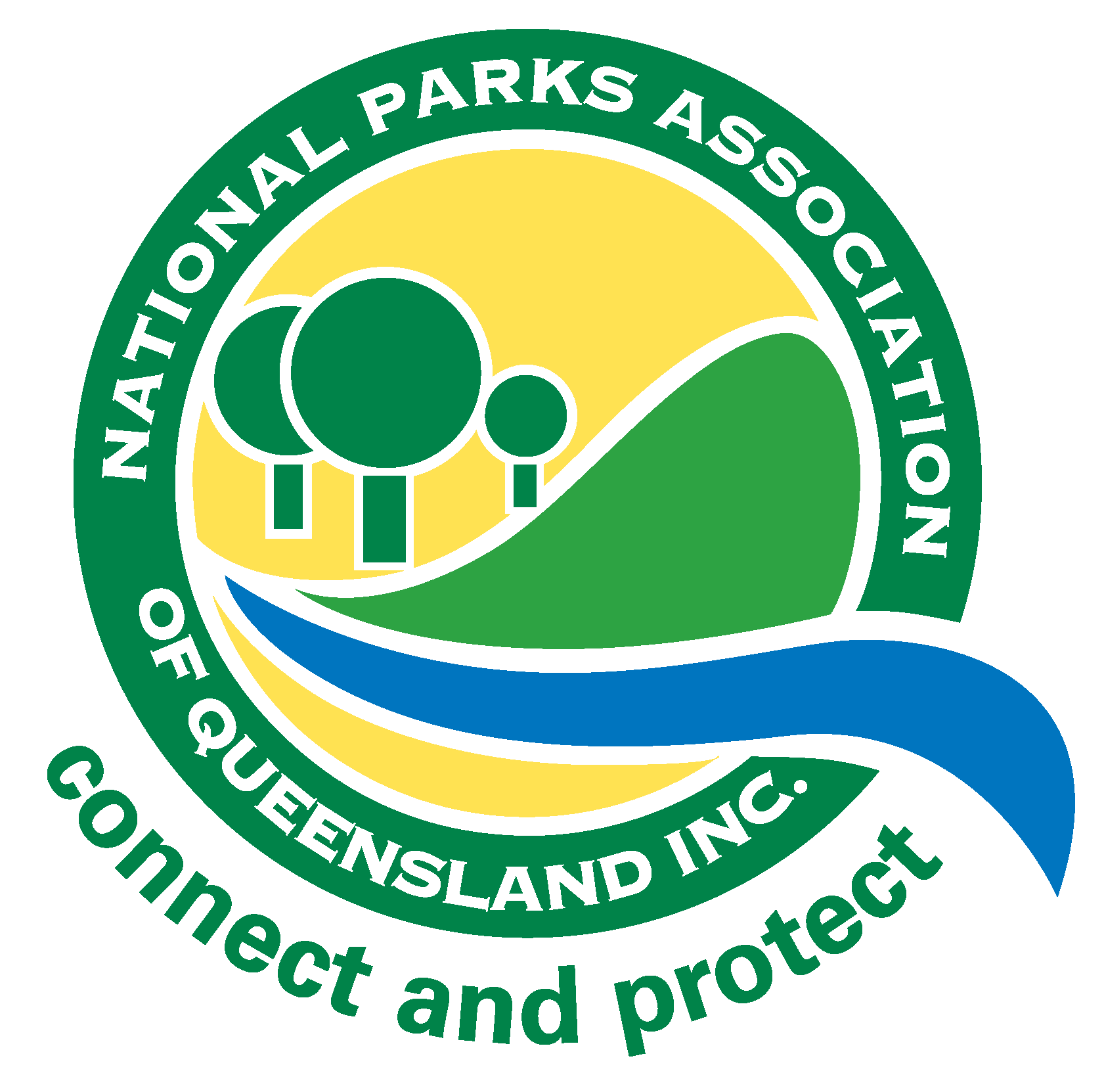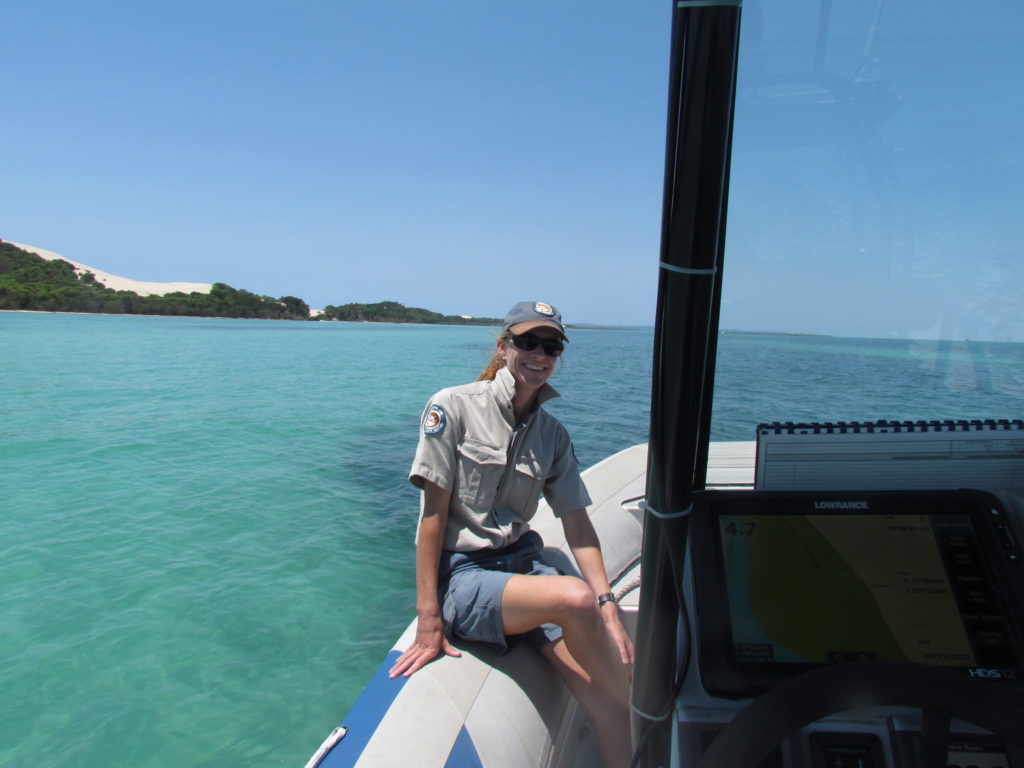Protected Magazine
Ranger Natalie
Natalie is a Ranger with Marine Parks based in Moreton Bay Marine Park. For as long as Natalie can remember, she has loved being outdoors. Her love of the natural environment and a passion for protecting it for future generations helped shape her career pathway to becoming a Ranger.
How long have you worked in national parks?
I have been a Ranger in Moreton Bay Marine Park for around 14 years. I started my career with QPWS by volunteering in the Marine Policy team and then with the Moreton Bay Marine Park team. I learned a lot in these roles but found that I was yearning to get back out on the water again, so I jumped at the opportunity when a marine park Ranger position came up in the team. It was, and still is, my dream job! As the Natural Resource Management Ranger, I manage marine animal strandings, including rescuing marine wildlife such as turtles, dugongs, dolphins, and whales. I also do natural resource management surveys and love educating the public about our marine park and its incredible natural values. I feel truly privileged to be a custodian of such a beautiful place and take great pride in our daily work.
Which parks have you worked in?
I have spent all my Ranger years in Moreton Bay Marine Park—if you love it, why change! I have spent time working at Gheebulum Kunungai (Moreton Island) National Park, South Stradbroke Island Conservation Park, Bribie Island and Minjerribah (North Stradbroke Island) recreation areas, assisting other Rangers during peak holiday periods, after natural disasters and being a crew member at planned burns or wildfires.
Before working with QPWS, I worked in New South Wales as a research technician with NSW Fisheries; it was here that I was first introduced to marine park management.
What is special about your current park?
Moreton Bay Marine Park is amazing! Despite the relatively high use it sees, it still boasts incredible natural values. On any day, you can see herds of up to 100 dugong, several different marine turtle species popping up for a breath or gliding along under the surface, populations of vulnerable inshore dolphins or the good old bottlenose dolphin putting on a show. We also see around 30,000 humpback whales passing through the park on their annual migration every year. Another amazing migratory animal that visits Moreton Bay are the 32 species of migratory shorebirds. Around 30,000 shorebirds migrate annually, from as far afield as Alaska, to spend the summer months feeding and resting in Moreton Bay—what an incredible journey.
What is your most memorable moment as a ranger?
Some of my memorable moments have been working with marine turtles. That feeling of satisfaction that you get when you release an adult turtle that has been entangled in rope and struggling for a considerable period. I have conducted many rescues like this over the years, and I have to say, no matter how many times you do it, you still get a massive rush of emotion and sheer elation as you cut an animal free. Watching the turtle swim away freely and surface to breathe is truly one of the most wonderful moments.
Marine turtle feeding ground research trips have also been a highlight. Working with the Threatened Species team, turtles are caught and brought onboard vessels to record a wide range of information, this is by no means easy work; many of these animals weigh over 100kg! But it is one of those ‘pinch yourself’ moments when I feel very fortunate to have the chance to be hands-on and contribute to important research that assists with managing threatened species within our park.
Can you describe your favourite national parks experience?
Point Lookout on Minjerribah is a special location that holds a place in my heart. The views are something to behold. Every year I visit Point Lookout during the whale season, sit quietly on the headland, and appreciate nature in all its beauty as humpback whales pass by (and dolphins, turtles, rays, and sometimes dugongs and seals). My visits aren’t quite as peaceful in recent years as I make a point of taking my two young children with me on my pilgrimage! I feel very strongly about instilling these values in my children, and there’s something pretty special about being able to show your children their first breaching whale.
What is the best part about working in a National Park?
Spending your workdays in a beautiful natural environment and playing a role in protecting it for future generations to enjoy is the best part about being a Ranger. It is a very rewarding job, 14 years on, and I still love turning up to work every day. I love being hands-on and feeling like I make a difference, which I think Ranger roles are particularly suited.
What is your top tip for visitors to your park?
If you plan on heading out on the Bay, make sure you do your homework before you go. Familiarise yourself with the Moreton Bay Marine Park Zoning maps—available online, on your GPS or apps on your phone—and try to have a good understanding of where you are going and the associated rules and regulations, all of which help keep Moreton Bay Marine Park a natural place for us all to enjoy.
Also, I can’t say this enough, take a minute, slow down and take it all in. By slowing down your boat speed, you will see so many magnificent marine creatures that we are lucky enough to have live right in Brisbane’s backyard


